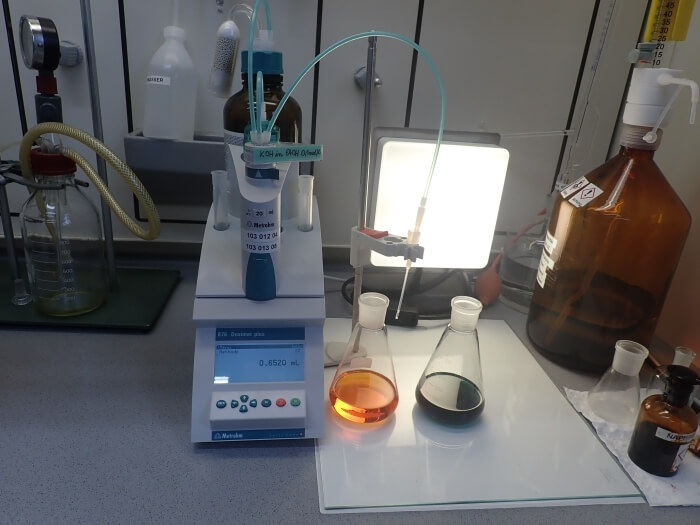


ADDINOL » Service » Expert tip »
Saponification number
The saponification number indicates the amount of potassium hydroxide (KOH) required to neutralise all free and combined acids as well as to crack/saponify the esters contained in 1g of a lubricant sample. As a result of the titration, the consumed amount of potassium hydroxide is indicated in mg. The unit is mg KOH/g lubricant. The term saponification is derived from the reaction carried out in earlier times for the production of household soap. In the lubricant industry, soap is the term used for metal salts of organic acids.
Interesting facts about the saponification number
- The standards for the saponification number can be found in DIN 51559 T1/T2.
- A saponification number is always found in fresh oils with EP active ingredients or with additives of greased oils, as these additives are saponifiable.
- In used oils, saponifiable substances are formed during ageing, which are to be regarded as precursors to resinous and oil-insoluble products.
- For aged insulating oils, alkali blue is used as an indicator (DIN 51559 T2).
- For pure vegetable oils, the saponification number is an indicator of the type of vegetable oil.
- A related indicator for determining the acid content in lubricants is the neutralisation number.

Contact

Application Technology